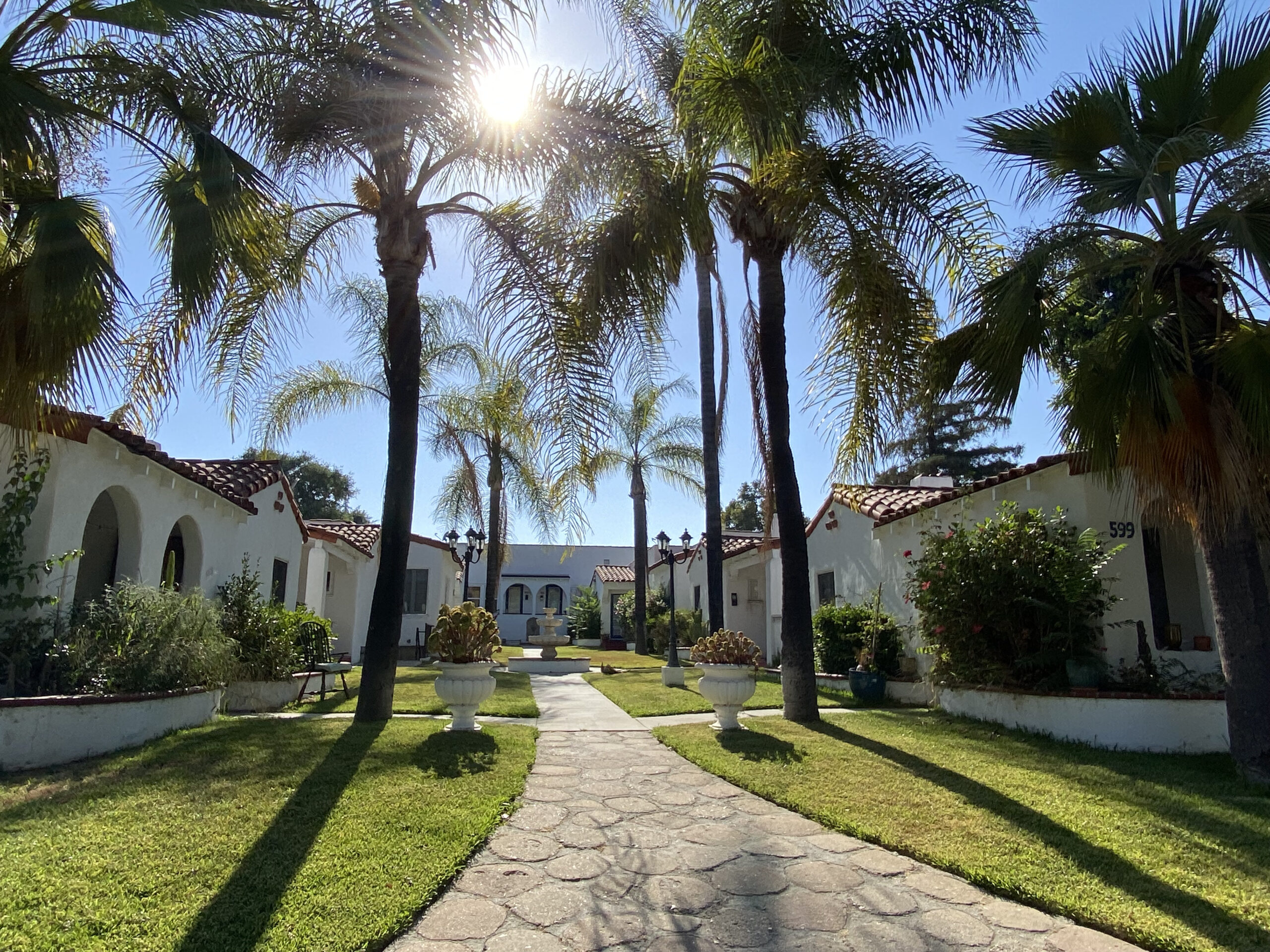
Bungalow court apartments are a fascinating and highly aesthetic type of housing totally unique to the greater Los Angeles area. Their history has some commonalities with another housing type only seen in LA, the dingbat apartment, in that bungalow courts created more affordable housing on a plot of land than one single-family home could.
In this vein of housing you won’t see outside of the greater Los Angeles area, dingbat apartments were also quickly built to house as many people as possible in the postwar building boom. Bungalow courts go farther back and with a two-pronged purpose.
One prong of the bungalow-building craze was winter vacation homes for wealthy out-of-towners. The other prong was affordable housing that uniquely encapsulated a more attainable version of the California Dream.
Freestanding Bungalow Homes vs. Bungalow Court Apartments
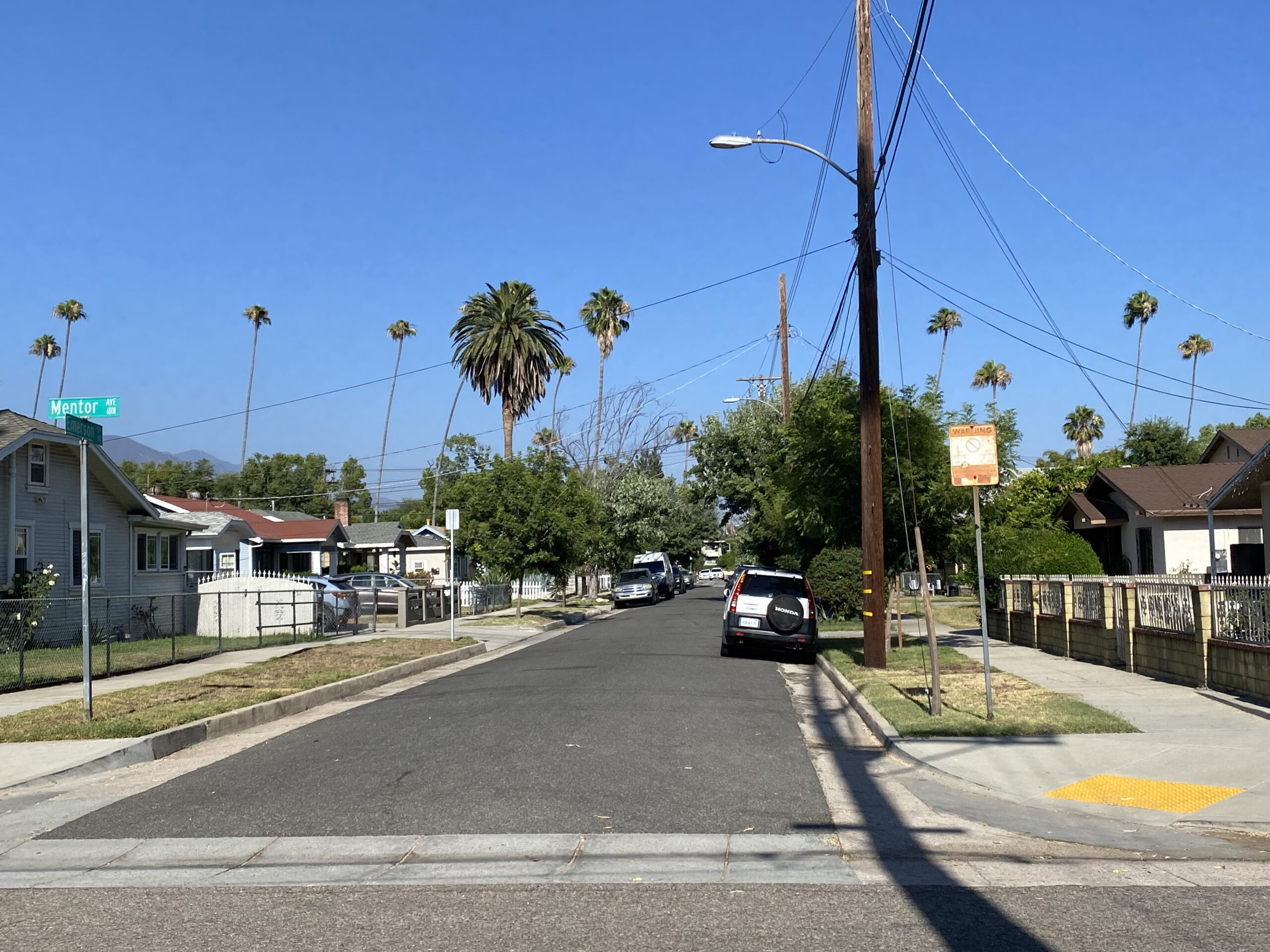
If you’ve ever browsed the LA County version of Zillow and sobbed, as one tends to do when scoping out their home buying options, you may have noticed that there’s a curiously large number of single-family homes under 1,000 square feet like an apartment yet are freestanding structures. While they’re single-family homes as far as legalities and tax zoning are concerned, semantically speaking they’re bungalows!
South Los Angeles and Vermont Vista in particular have streets lined with these small bungalows, many of which were built by Southern California Home Builders during the Roaring Twenties. Arts and Crafts and Craftsman style bungalows were in vogue: before you could buy a tiny house or yurt on Amazon, Sears sold DIY house kits that popularized the “California Bungalow”.
What separates a freestanding bungalow from another small structure like a cottage is that bungalows build out, not up. The one-story structures are synonymous with LA sprawl, opposed to two-story seaside cottages in the UK where the term originated.
While cottagecore Instagram aesthetics conjure up remote cabins and modern cottage homes in the woods, the official term in English and Scottish law defines cottages as not having land. Bungalows certainly have land, especially California bungalows that harmonize with LA’s outdoorsy lifestyle.

Bungalows are characterized by being wide or long with just one story, and a gabled roof with a low pitch. The interior might be open concept or have separate bedrooms. Bungalows are rarely larger than 1,200 square feet. Some are even smaller than your typical studio apartment but built as a freestanding structure. Unlike vacation cottages, both freestanding bungalows and bungalow court apartments indeed have land.
Bungalow homes can be found all over the City of Los Angeles and LA County, most notably in Pasadena. The southern and eastern parts of the city have the largest amount of freestanding bungalows that are sold or rented as single-family homes on their own lot, in addition to small units in bungalow courts rented out as apartments.
Echo Park, Los Feliz, Silverlake, and East Hollywood are home to both bungalow courts and freestanding bungalows, and bungalow court apartments are common sights in these neighborhoods. Craftsman style bungalow courts are the most common in Hollywood and Los Feliz.
Many of the early Pasadena bungalow courts were also Craftsman, but a majority of the 1920s-1930s bungalow courts were built in that classic Mission Revival style most associated with California architecture. Splashes of Spanish Colonial and Tudor bungalows were thrown in. Even Art Deco bungalow courts were built in Pasadena at this style’s height in the 1920s!
Bungalows as Vacation Homes
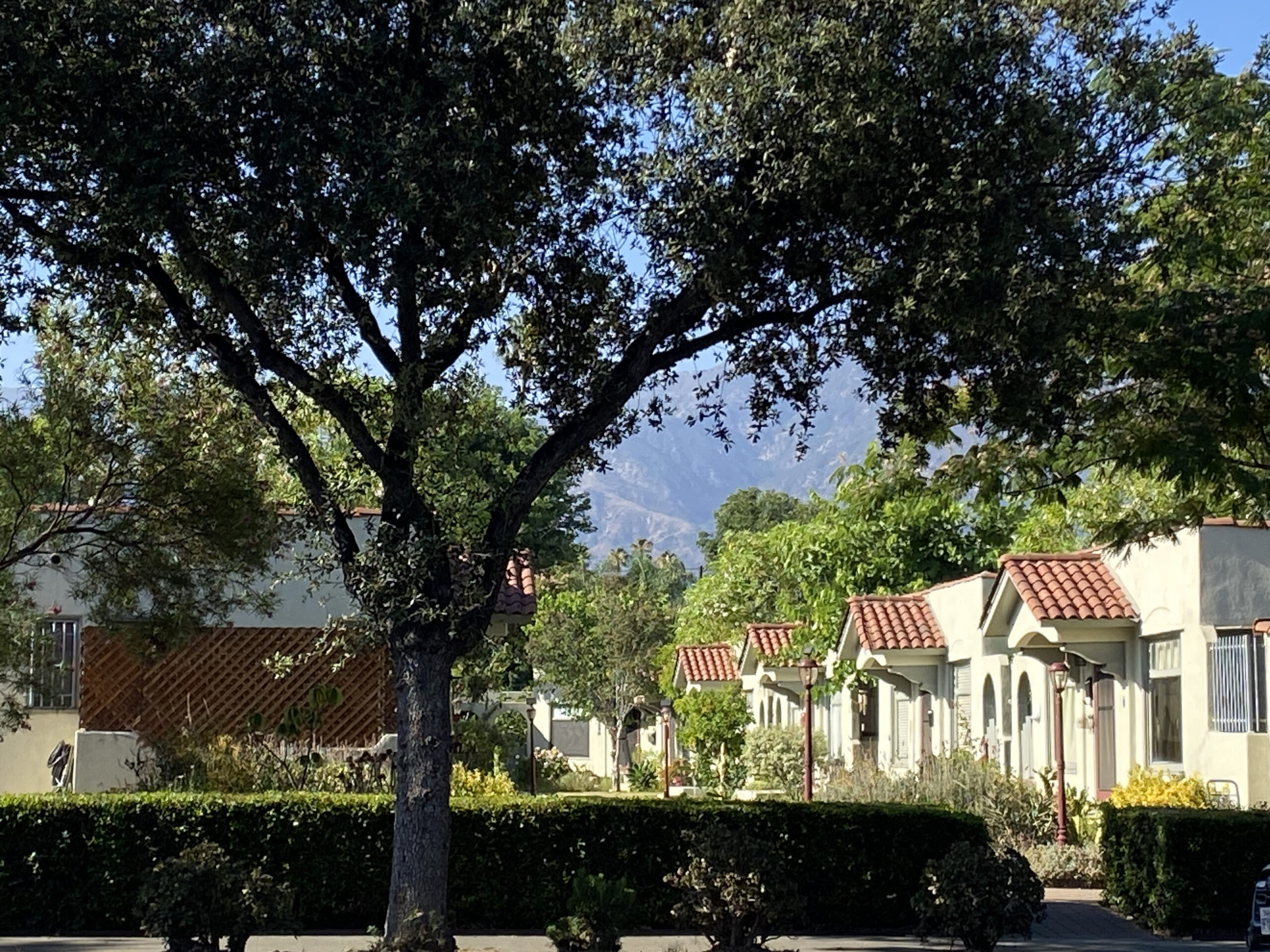
In Pasadena, bungalows were initially intended for vacation use. St. Francis Court was the first of Pasadena’s many bungalow courts. Built in 1909 on the corners of Colorado Boulevard and Oak Knoll Avenue, this bungalow court has been replaced by a large mixed-use development and several other commercial properties.
In the early days of Hollywood when the first wave of bicoastal film moguls and wealthy travelers would “snowbird” for the winter, it seemed impractical to buy a second single-family home. It would be just shy of a century before Airbnb and extended-stay hotels entered our lives, so it also didn’t make sense to sublet an apartment that lacked basic comforts like your own bed and cookware.
By buying a little bungalow in Pasadena, it gave the owners a sense of permanence and a more home-like feel without actually being in their normal home. It also meant getting to stay in a large, busy city without sacrificing fresh air and privacy.
However, bungalow court apartments sprang from this wave of separated, freestanding bungalow construction in Pasadena. Pasadena City Council passed an ordinance requiring new multi-family construction to include a landscaped courtyard. This didn’t make typical apartment buildings feasible for developers, so they built smaller versions of bungalows.
The bungalow court construction wave spread to East LA, South LA, and into Los Feliz and Hollywood. Even without ordinances from the City of Los Angeles dictating how they could build, bungalow court apartments appealed to developers because they were cheaper to construct than standard apartment buildings while still satisfying the minimum allowable number of units for multi-family housing.
Bungalow Court Apartments Were Designed to Foster Strong Neighborly Relationships
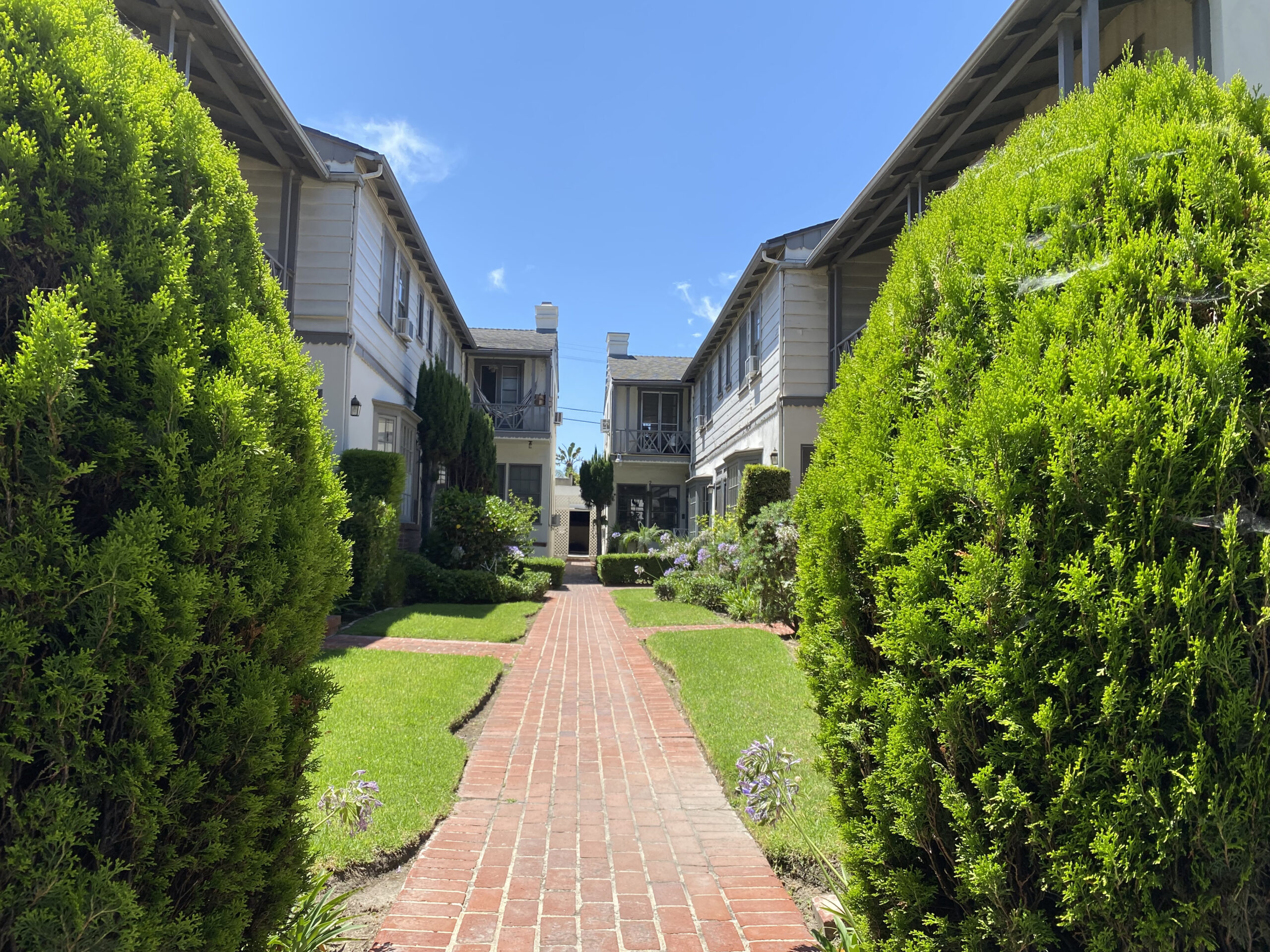
Bungalow court apartments were intended to fill the same need as postwar Los Angeles dingbat apartments and high-rise apartments, except they took advantage of the wide open space that continues to draw people out west even today. Los Angeles residents who couldn’t afford single-family homes, or didn’t need all the space, could have some of the privacy and outdoor space one enjoys with a house but with a similar size and floorplan to an apartment.
Most people who live in apartments may not know or see their neighbors that often. You might know them by that person who constantly moves furniture above you or lives next door and plays their TV too loud.
High-rise apartment buildings can foster tight-knit communities but they also enable the residents to come and go without ever interacting. The sprawl of suburban and outer city blocks bedecked single-family homes can be isolating. But bungalow courts give neighbors a chance to socialize. By sharing outdoor space without having to share their indoor space, bungalow court residents get to know one another without needing to extend the effort one would on a typical single-family block.
This made Los Angeles bungalows one of the most desirable housing types in the area, despite the amenities that come with larger and more modern apartment complexes and sprawling single-family homes.
Then in a move completely counter to the ordinance enacted in Pasadena, the City of Los Angeles banned the construction of bungalow courts in 1934. It wasn’t strictly against this development type, but one parking space per unit was now required and bungalow courts almost never had parking at all. It’s partly why dingbat apartments became more ubiquitous after the law was passed: building up instead of out made it easier to use the ground for parking spaces.
Whether shaped by ordinances or preferences, bungalow court construction gave way to the evolution of courtyard apartments that weren’t necessarily bungalows. Los Feliz, North Hollywood, and the Valley are home to courtyard apartments that model the original bungalow courts but usually have higher density.
Encouraging neighborly relationships and a sense of communal living while retaining privacy was seen as the cornerstone of the California Dream. Portrayals of bungalows in movies produced during the golden age of Hollywood only drove this mindset home further, and the bungalows are what people were expecting when they came to the city to make it in show biz.
The Future of Los Angeles Bungalow Apartments

Los Angeles bungalow courts are a low-density multi-family housing type that became ubiquitous throughout the area as it satisfied a growing city’s need for housing while equally distributing a taste of the California Dream. But with so many of the original bungalows not holding up so well to climate change, hostile land grabs, and murky historical designation if they had renovations done at some point, these unique relics of LA history have a future in the balance.
With about 350 bungalow court developments left in Los Angeles and over 100 in Pasadena, not all of them were eligible for historical designation. Some of the original bungalows have been moved or demolished as a result.
Nevertheless true to their origins as a bungalow-rich city, Pasadena adopted the bungalow and courtyard model in mixed-use and commercial architecture as well.
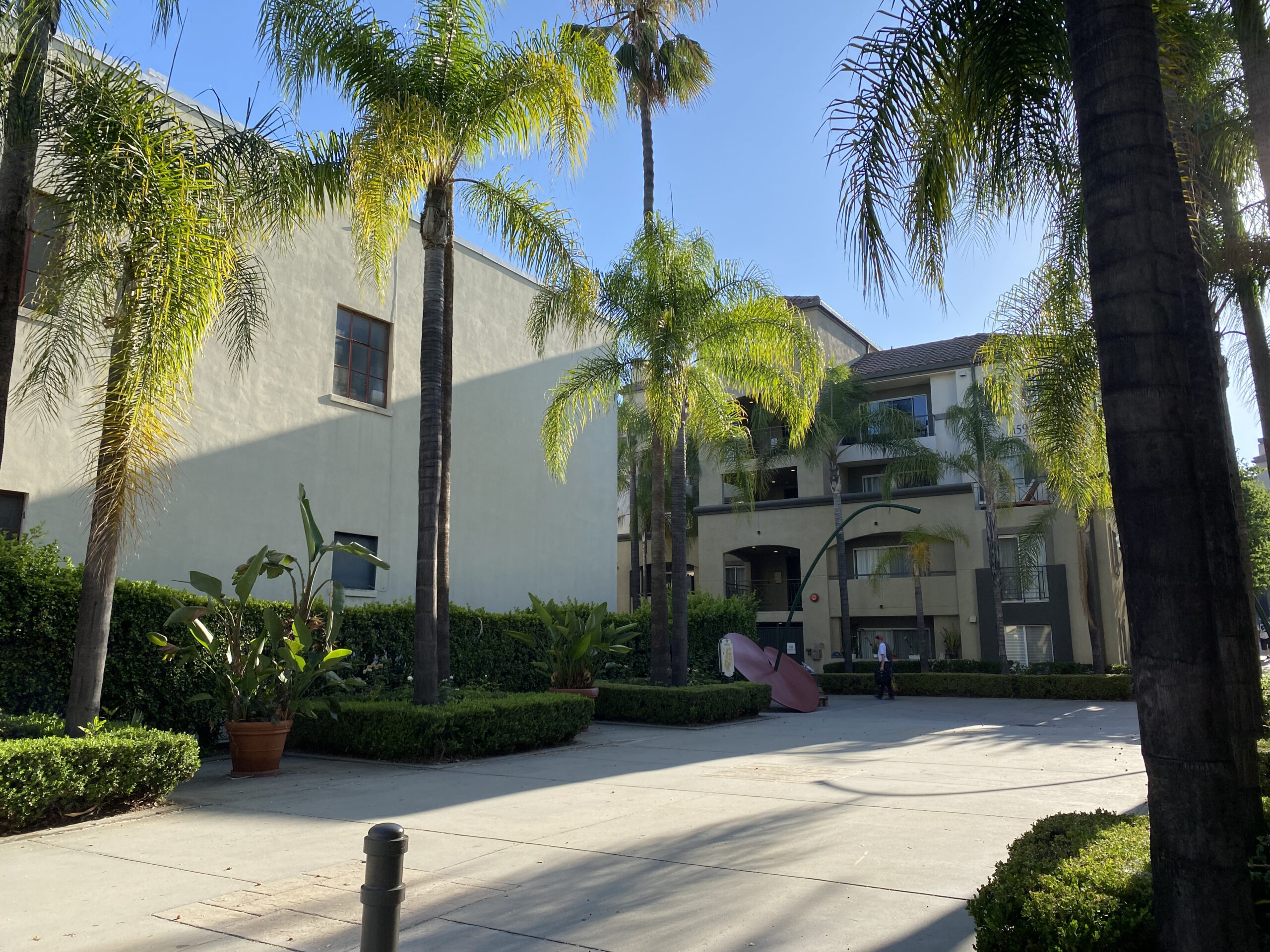
As social preferences for housing types change and the City of Los Angeles slowly walks back towards its roots as a streetcar city, rent-burdened Angelenos and would-be homebuyers who are priced out long for developments like bungalow courts to return. If not to restore the originals and help maintain or even modernize them, to bring forth the next step of their evolution with a mix of private and shared outdoor space and amenities, smaller yet spacious homes, and a strong sense of community.
The California bungalow was upheld as this symbol of attainable housing for the working class. With a housing crisis causing both sale price and going rent for these rare and vaunted units to skyrocket, it’s difficult to fathom whether we’ll have similar developments in the future.
Today, building large multi-family units like apartment complexes and mixed-use developments such as Wilshire Vermont and Broadcast Center is more lucrative and cost-effective than smaller lots with sprawling bungalows.
What was once affordable and attainable has also been pushed farther out of long-time residents’ and newcomers’ hands: you’ll be hard-pressed to find a South Los Angeles bungalow for under $500,000. Pasadena and Hollywood bungalows go well into the $600-700K range despite not having nearly the same square footage as a typical single-family home in LA.
If you found an apartment for rent in a bungalow court or were able to swing purchasing one, you definitely snagged a cherished piece of Hollywood golden age history that’s completely unique to this sprawling former orange grove of a city.

